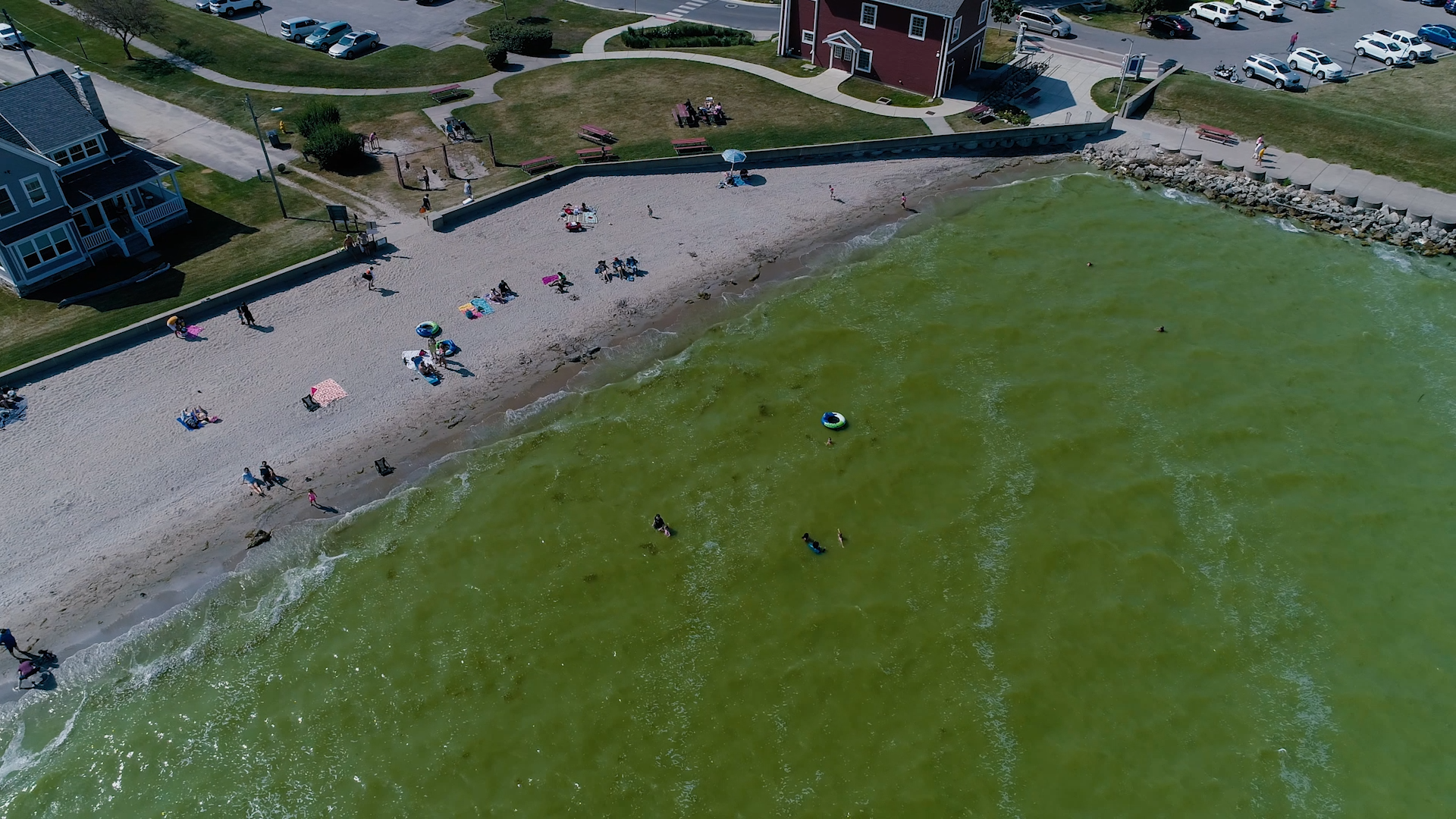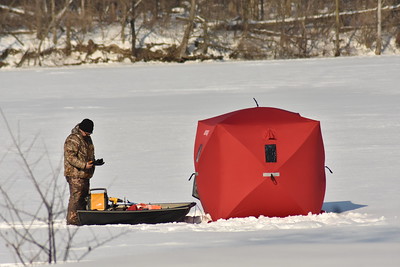
A new study completed by international researchers says current efforts to reduce harmful algae blooms by limiting phosphorous in Lake Erie could result in more toxic algae.
“I think it has implications for how we think about cleaning up Lake Erie,” said Greg Dick, director of the Cooperative Institute for Great Lakes Research at the University of Michigan, and one of the study’s authors. “Our study suggests it may be very important to consider nitrogen as well.”
The recently released study, completed by researchers at the University of Berlin, University of Tennessee and University of Michigan, suggests current phosphorus reductions may help some algae produce more toxins.
Lake Erie has suffered severe algae blooms during the past decade, including one that caused the Toledo water crisis, shutting down the water plant for several days in 2014. Since then, HABs have been a hot topic in the region. Ohio Gov. Mike DeWine’s H2Ohio program, launched in 2019, aims to address the issue with millions in payments to farmers for implementing a number of best management practices, or BMPs, to help prevent agricultural runoff. In addition, the project has already constructed or improved dozens of wetlands and begun work to help repair failing septic systems in critical areas.
But recent efforts, including H2Ohio, have not produced significant reduction in the amount of phosphorous entering Lake Erie.
And if reductions do occur, this study speculates, it’s likely to produce an unwanted effect: smaller algae blooms with more highly toxic strains dominating.
What the study says
“The key factor is that there’s different types of algae and they’re not really different species, so we call them strains, just like there’s various strains of COVID,” explained Dick. “They’re cyanobacteria, but most people just call them algae. Some of them can make toxin and some of them can’t.”
Dick said phosphorous reduction is definitely a reliable method to limit the growth of algae. But the problem with limiting it, while not limiting nitrogen, is that it can actually promote the growth of certain toxin-producing algae strains.
“Those two strains are competing with each other and which of those strains wins that competition is a strong determination of toxicity,” he said. “So when you reduce the phosphorous, our model suggests it creates conditions that favor toxic strains.”
The study compiled information from more than 100 scientific research papers written over six decades in an effort to more fully understand the growth of cyanobacteria and the toxins they produce.
After compiling the information, professors engineered a software model which synthesized what happens in a lake. The computer model integrated the knowledge learned by scientists that had previously studied algae growth and the production of toxins.
In short, reducing phosphorous reduces algae blooms, the study agrees.
But the reduced bio-mass of smaller and less dense blooms allows for more sunlight to penetrate water, which the toxic-producing strains like. In addition, the production of microcystin toxins by the algae helps shield it from the harmful effects of hydrogen peroxide, which occurs naturally, including as a by-product of photosynthesis.
So less phosphorous means less algae overall, though some of the remaining algae strains finds themselves in a position to produce larger amounts of more concentrated toxins as a result of the lack of competition between strains.
What does this mean for Lake Erie?
Laura Johnson, director of the National Center for Water Quality Research at Heidelberg University, said the challenge of taking a synthesized computer model and applying it to a 9,900-square-mile lake is a big one.
“Taking it and scaling it up to the entirety of Lake Erie, I think it’s an interesting idea,” she said. “It could potentially explain things like in 2014 during the Toledo water crisis, why did that bloom get so toxic when it wasn’t even very big? It was kind of a confusing thing. It happened so quickly, and the water plant shut down.”
Johnson said phosphorus and nitrogen go hand-in-hand sometimes, but other times not, explaining they’re both applied as fertilizer in various forms though not always at the same time.
“We haven’t had a lot of reduction in phosphorus yet,” she said. “So let’s just see what happens, let’s get these reductions going, and then we’ll be better able to understand what we’re observing in the lake and adaptively manage. That is, change your management based off what’s actually happening.”
Scaling up a study to Lake Erie may not be necessary or even possible right now. Fortunately, experiments come in all sizes.
“We do experiments on a variety of scales,” Dick said. “The smallest scale you could do in a bottle, taking lake water and manipulating it. There aren’t a lot of large-scale experimental lakes, but Canada has one.”
The International Institute for Sustainable Development’s Experimental Lakes Area near Kenora, Ontario, is the place where real life lake experiments have been happening for more than 50 years.
“It was specifically started by the Canadian government to deal with the algae issues in the Great Lakes,” said Scott Higgins, a research scientist at IISD. “The interventions that were being suggested were extremely costly, billions and trillions of dollars. So before they made policies that had major economic implications, we needed to test ideas in a more natural scale and so they invested million to create this area.”
The IISD’s 58 lakes range from small ponds to lakes dozens of acres in size. Lake 227 is a popular lake when it comes to algae research, which began in the lake in 1969, born from the controversy over whether algae management should concentrate on phosphorous, nitrogen or carbon, Higgins said.
“Some of those controversies have re-emerged, for example right now there are probably two camps,” he said. “Everyone agrees you need to reduce phosphorus, that’s not controversial at all. Controversy comes in on whether nitrogen reductions are going to be effective or not.”
Scientists at the ELA are working on that in Lake 227 in long-term studies.
“Lab experiments are too small and don’t include all aspects of the community, lake systems are really complex,” Higgins said. “And they’re too short, anywhere from hours to weeks. So our argument is that these experiments to test whether or not nitrogen or phosphorus need to be managed long term, they need to be long-term experiments.”
He said two more lakes were recently brought on-line for algae-related experiments.
When asked about the study’s practicality, Dick said that while the computer software model operated solely in a laboratory and not in the field, much of the data utilized came from the field.
“There have been a number of studies in the field that support this idea that nitrogen is important for toxicity, so the idea that this is only based in a lab is not quite right,” he said.
Looking for action on the algae
Sandy Bihn, executive director of Lake Erie Waterkeeper, said she’s aware of the new study and has received inquiries from people wanting to know more. But at the end of the day, she’s less interested in more scientific studies and more interested in keeping nutrients, including nitrogen, out of the lake by stopping them at their source. That source, she said, is concentrated animal feeding operations (CAFOs.) LEW recently hosted a screening of The Erie Situation, drawing about 150 to watch the film and speak with director David Ruck about CAFOs and Lake Erie.
“You know I’m hot on the issue of CAFOs and their impact and the state of Ohio just won’t do anything about them,” she said. “They just won’t say that we have too any animals and too much animal waste and that it’s causing a problem for the water.”
Bihn said she believes nitrogen and phosphorous reductions should go hand-in-hand, and that the H2Ohio program is missing out by focusing on phosphorous.
“I think they should be factoring in nitrogen,” she said. “Until you factor in all the sources and recognize all the sources. People are asking me ‘How significant is this?’ and I say the science has always said that once the phosphorus seeds the bloom it’s the nitrogen that really makes it take off, it’s the driver. So both of them are nutrients of concern, always have been.”
While the H2Ohio program is operating full speed now, with a concentration on mainly phosphorus reduction and hundreds of millions already spent or committed for future projects, that doesn’t mean things can’t change if necessary.
“The really good news is that a lot of the strategies used to reduce phosphorus are also going to reduce nitrogen,” Dick said. “So this doesn’t mean that H2Ohio isn’t a good thing. Things like edge of field buffer zones with more natural vegetations, things like restoring wetlands, those are all going to help remove nitrogen as well as phosphorus.”
He said the nitrogen issue isn’t a completely new knowledge set, and that tracking nitrogen in conjunction with phosphorus should be an important component of future efforts to clean up the algae blooms on Lake Erie.
“H2Ohio does need tweaking, and as we work toward the goals we need to reduce the nutrients input, monitoring those nutrients in the waters to see how we’re doing is needed,” Dick said. “That’s where tracking nitrogen will be really important. We need to see how much progress we’re making, and we need to hold the sources of those nutrients accountable.
But more studies mean more time, according to Bihn.
“At the end of the day to solve the problem we simply need to reduce the sources. No matter what,” Bihn said. “No matter how much phosphorus and how much nitrogen, they need to be controlled. They both need to be looked at scientifically, but telling me that isn’t going to solve the problem. Tell me how to reduce the sources and get rid of the problem. That’s all I really want to know.”
Catch more news about algae at Great Lakes Now:
Harmful algal blooms cause problems in Lake Erie; drinking water customers pay the price
Great Lakes Water Authority monitoring Detroit River for algal bloom threat
Featured image: Toxic algae blooms around the Great Lakes in the summer. (Great Lakes Now Episode 1013)
1 Comment
-
Phosphorus mitigation is a proven technique to reduce primary productivity. This will create an ecosystem that is far less conducive to HABs. The title is misleading! Dramatic example – 1 toxic algal cell in Lake Erie will not cause the lake to be toxic.




